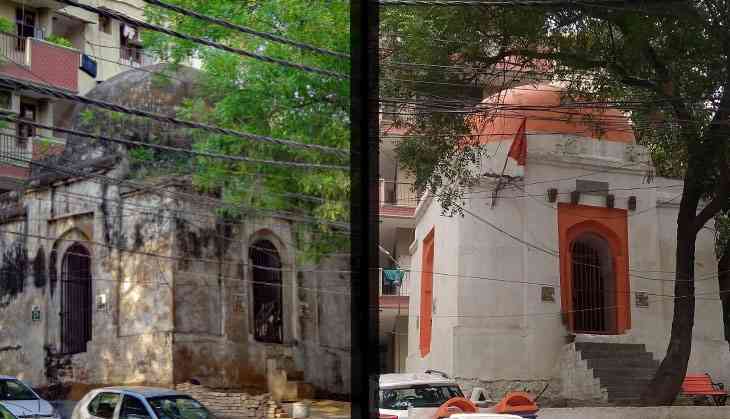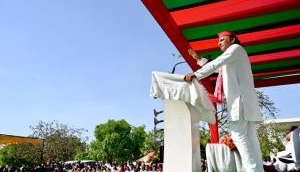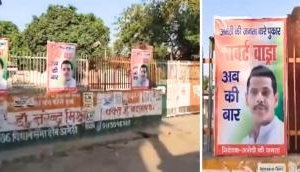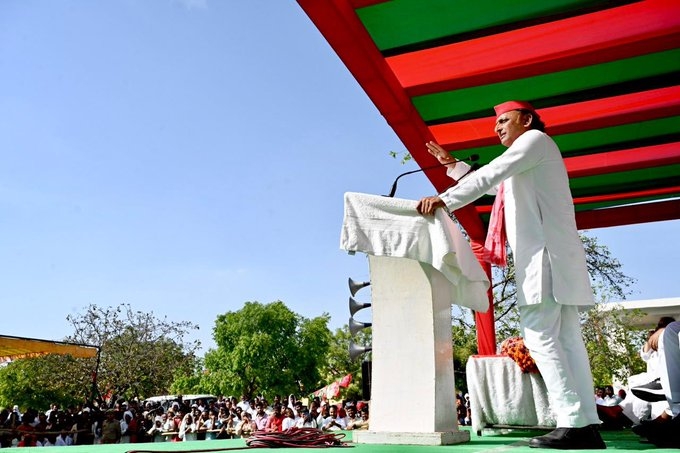Medieval-era monument converted into temple in Delhi

Amid the running narrative of neglect of historical monuments across the country, a strange case of a peculiar interest in one such monument has surfaced.
In South Delhi's urban village of Humayunpur, some Hindu enthusiasts have shown so much interest in a medieval-era structure that they have not just appropriated it but also converted it into a temple.
The structure is believed to have been the resting place of an unknown figure from the Tughlaq-era. Not too long ago it used to be a square structure with a domed roof, arched doorways on all four sides and an unmarked grave inside, as recorded by these social media users:
https://www.flickr.com/photos/smitsandhir/34493602786
Malik Chand's Gumbad in Humayunpur, behind CCD, DDA Market, Safdarjung Enclave (opposite Deer Park)#HaveYouSeenDelhi pic.twitter.com/bPreOflmkg
— Vikramjit S Rooprai (@DelhiHeritage) October 31, 2014
The grave is gone now and so are the archways on two of the walls. On the outside, the walls have been painted white and the dome saffron. Inside, the floor seems to have been raised and cemented, with no sign of the grave. Idols of Hindu gods and goddesses have been installed, including those of Radha, Krishna, Ganesha, Parvati and a Shivalinga.
_111400.jpg)
_111400.jpg)
Just above the entry, a plaque has been cemented into the wall that proclaims the temple to be a Shiva temple, owned by Bhola Dharmarth Trust (Registered). The plaque also carries a date, 15 June 1971, but it is not clear whether the date is of the temple's foundation or the Trust's registration.
_111400.jpg)
Locals say the temple was constructed by villagers and that a priest also comes and conducts pooja in mornings and evenings. On the raised structure that houses the 'temple', two benches have been installed by local municipal ward councillor Radhika Abrol Phogat (BJP), which indicates her association with the establishment of the 'temple'.
Speaking to Catch on Wednesday, Phogat held local villagers responsible for the entire act of conversion of the structure into a temple. She said locals didn't care for its historical significance and she couldn't oppose them as that would have attracted their ire. She also noted she didn't think this was a protected monument as no-one from the Archeological Survey of India or any other authority ever came to stop the activities. She said this was most likely a 'masjid' that has now been converted into a temple.
Protected monument
Phogat's response shows she knew about this and endorsed it instead of opposing it, in order to maintain her popularity in her ward. What she doesn't realise is apart from the brazenness behind this act of vandalisation of a piece of history, its a patently illegal act. More so because the structure now damaged probably beyond repair was a protected monument, under the Delhi government's Department of Archaeology.

Catch has reached out to the department for its response, but the nodal officer is yet to reply. This story will be updated after receiving the department's response.
Under the Ancient Monuments and Archeological Sites and Remains Act, 1958, damaging monuments and heritage sites can attract two years in prison and fine up to Rs 1,00,000. Under the Delhi Ancient and Historical Monuments and Archaeological Sites and Remains Act, 2004, the penalty for such acts imprisonment of up to two years and fine up to Rs 50,000.
A concerted campaign?
Writer and heritage enthusiast Sohail Hashmi told Catch that this unfortunate development is not a one-off incident. He said not too far from the Humayunpur tomb is another much bigger tomb in Mohammadpur which has also been similarly transformed into a temple.
He also cited examples of similar developments from other areas in the capital as well, like Greater Kailash. Hashmi is of the firm opinion that to install temples outside and inside such monuments is a concerted campaign. He said what to speak of monuments protected by the state government when ASI-protected monuments like Safdarjung's Tomb, Old Fort and Khirki Mosque have fallen prey to such constructions.
He said the temple just outside the entry gate to Safdarjung's Tomb came up and expanded in front of his eyes and now it claims to be a “pracheen mandir” (ancient temple). Similar is the case with a temple inside the Old Fort, Hashmi added. He also noted that the roots of this problem lie in the fact that the union government of the day has divided the country's heritage into Hindu and non-Hindu heritage.
First published: 4 May 2018, 12:30 IST



_251372_300x172.jpg)


![BJP's Kapil Mishra recreates Shankar Mahadevan’s ‘Breathless’ song to highlight Delhi pollution [WATCH] BJP's Kapil Mishra recreates Shankar Mahadevan’s ‘Breathless’ song to highlight Delhi pollution [WATCH]](http://images.catchnews.com/upload/2022/11/03/kapil-mishra_240884_300x172.png)

![Anupam Kher shares pictures of his toned body on 67th birthday [MUST SEE] Anupam Kher shares pictures of his toned body on 67th birthday [MUST SEE]](http://images.catchnews.com/upload/2022/03/07/Anupam_kher_231145_300x172.jpg)






